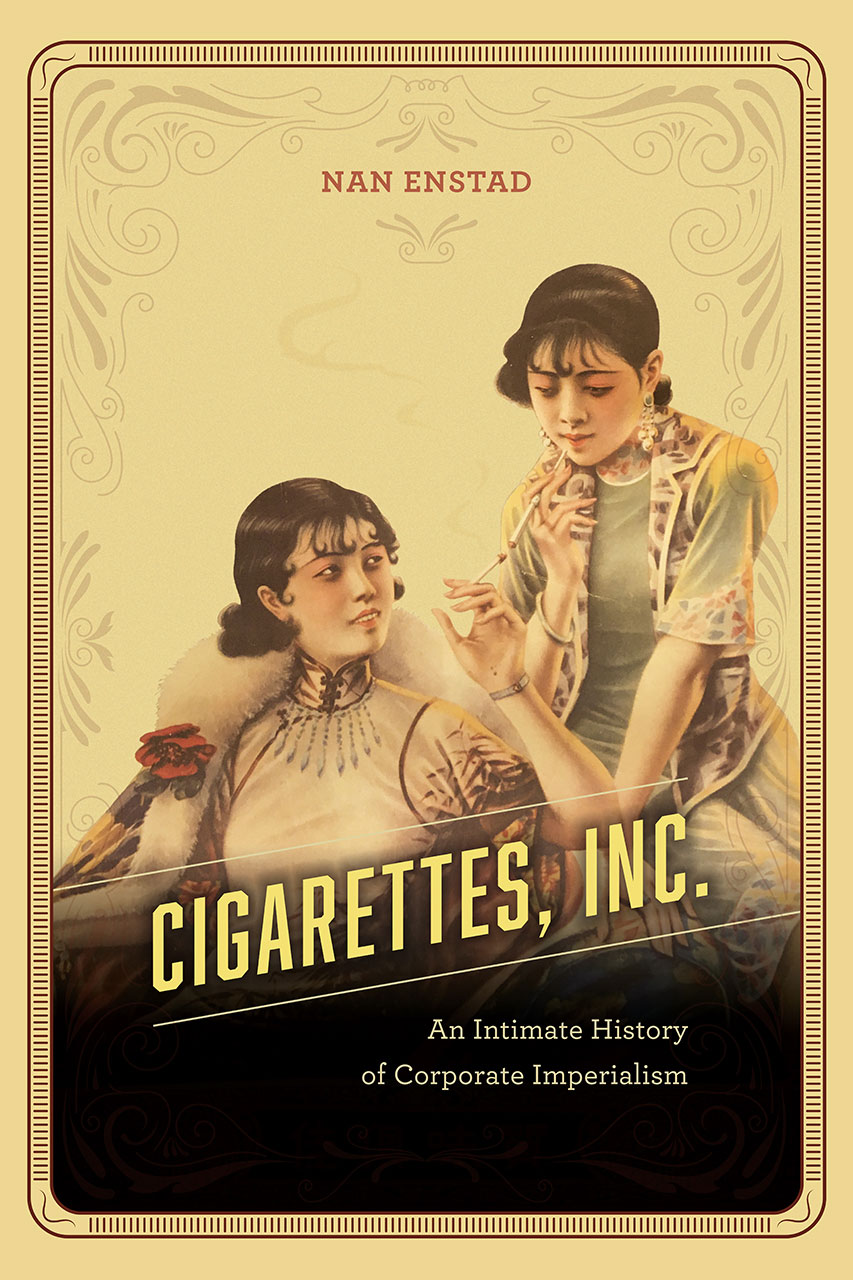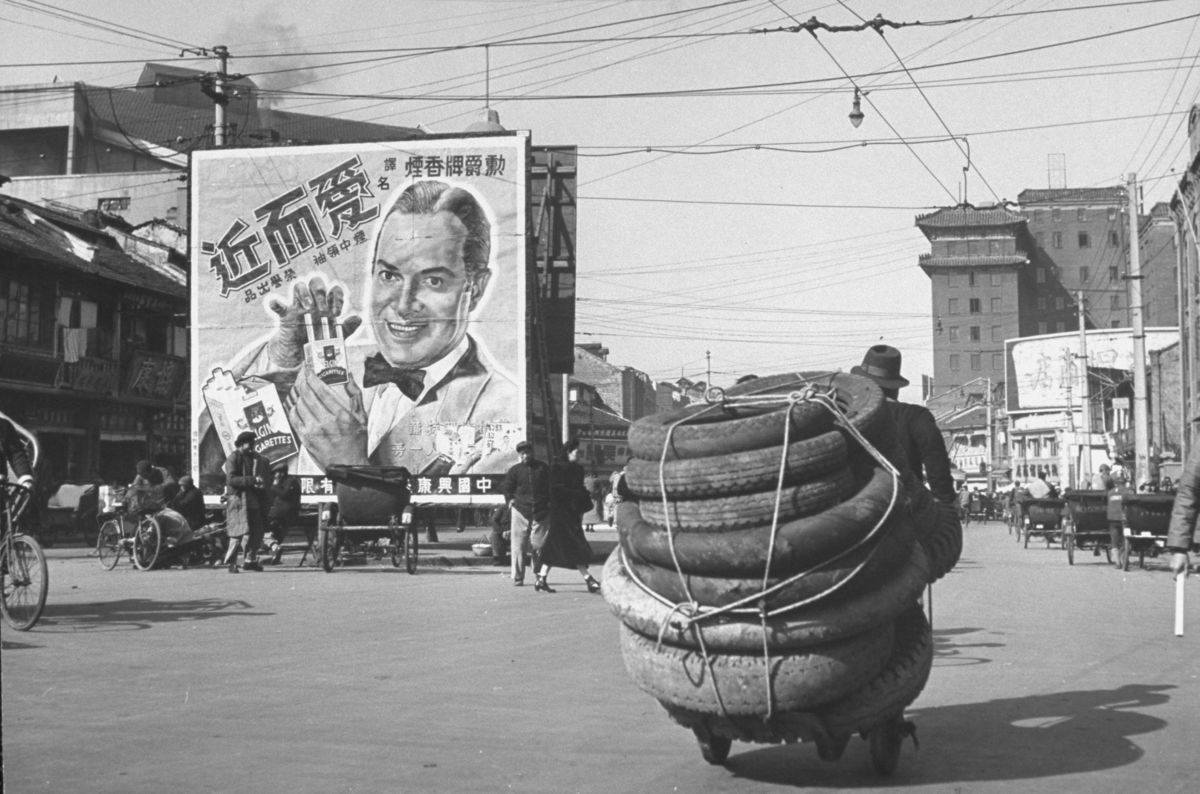Part of the Series
Progressive Picks
Truthout: Why are cigarettes important to the history of the corporation?
Nan Enstad: There are two stories about cigarettes and corporations that especially need to be heard: One is about how the corporation itself changed and the other is about the development of branding as a major factor in social and political life.
The first story took place in the 1890s, when the cigarette corporate monopoly, the American Tobacco Company (ATC), was instrumental in a major redefinition of the corporation’s powers. In essence, the ATC successfully prevailed against state-level court challenges to its monopolistic business practices by drawing on the Fourteenth Amendment’s new federal protections of property and due process intended to safeguard the citizenship of African American men. With this success, the ATC helped wrest the corporation free from state regulations and redefined it as private rather than public in nature. This was a huge shift that set the stage for corporations’ claiming liberty rights in the twentieth and twenty-first centuries, but it was important in its own right, as it shielded and obscured corporations’ “private” uses (and abuses) of public resources. I tell this story in chapter two of the book and, in quite different form, in a Boston Review article.
The second big story about cigarettes and the corporation takes place in the 1920s and ‘30s, when cigarette corporations moved to the global cutting edge of branding and marketing. By the mid-1920s, the two most popular cigarettes brands in the world were Camel Cigarettes in the US and Ruby Queen Cigarettes in China. But success did not come in the way that industry leaders had expected or planned. Cigarette executives thought that they needed to offer many cigarette brands to reach the diversity of tastes and price points. When these single brands became so trendy, they gained a remarkable social power and also made cigarette smoking itself more popular. In fact, the brands sometimes escaped the control of marketers and became resources for other projects. Anti-imperial protestors in China effectively rebranded Ruby Queen cigarettes in 1925 as a symbol of imperialism. Another non-parallel example is that African American workers in North Carolina appropriated the brand name Lucky Strike to attribute social value to a Black baseball team. These uses of the brand far beyond marketers’ intentions mark the beginning of the hyper-branded world that we live in.

Cigarettes, Inc. also makes an important contribution to a lot of interesting recent scholarship about how Jim Crow was, in a sense, a major U.S. export. It traveled to oil fields in Saudi Arabia, served as an inspiration for race law in Nazi Germany, and, as you detail in your book, shaped the cigarette industry in China. Tell us what you found.
Thanks for this question—it hones in on the shape of the book and one of its most important arguments. The book is organized around a group of white Southern men who worked in the cigarette industry in both the US South and China. There were hundreds of white guys who went from North Carolina and Virginia to China between 1902 and 1937 and they did much the same thing that their counterparts at home were doing: they oversaw the farming and expansion of a particular tobacco variety—bright leaf tobacco—and they built and managed cigarette factories and distribution. These were massive operations in both places. The company claimed that men from the U.S. South received jobs in China if they had experience with tobacco. Black men had as much or more experience with tobacco as white men, but not one job in China went to them. The book accounts for how this racialized political economy developed—it constituted Jim Crow in the Upper South—and shows that the tobacco corporation in the U.S. organized its hierarchy at every level not around knowledge and ability but around Jim Crow segregation.
Jim Crow, then, was part of how white men got to China, and when they arrived, they continued to use Jim Crow segregation to order corporate expansion, just as white men did at home. Jim Crow shaped corporate strategies in farming, factories, sales, and in the management of servants in the foreign homes in Shanghai.

In exploring just how Jim Crow shaped corporate expansion in both places, I learned two really important things. First, though corporations wished to export Jim Crow segregation, they could not do so wholesale. They had to adapt those strategies to conditions in China and Chinese people fought back, just as African Americans did. This makes for some interesting stories and casts African American resistance to segregation in a new light. The second thing I realized is that the use of Jim Crow overseas should not be seen as individual Southerners acting out of their bias, but as a managerial network that was itself a corporate structure. This network was as much or more important to shaping the day-to-day operations of the corporation as the board of directors, but it has been invisible to historians.
What role did corporations play in elevating cigarettes to an iconic stature in early jazz culture?
The chapter on the synergy between cigarettes and early jazz in the US and China was my favorite to research and write. I noticed early on in the process of researching the cigarette industry that jazz kept coming up—in ads, in cigarette-sponsored jazz radio shows, and in the remembrances of corporate workers from factory workers to executives. I came to see that the two “modern” products gained a lucrative resonance from each other.
The initial association between the two probably was organic rather than strategic. A jazz dance craze spread across the globe in the 1910s and 1920s, and cigarettes became an expected offering at cabarets. Of course, corporations and cabaret owners alike would think to sell cigarettes—and alcohol where it was legal—to their dance-crazed clientele. Corporations sought to build on an emerging popular association between the two commodities by sponsoring jazz radio shows with names like The Lucky Strike Radio Hour (later The Lucky Strike Hit Parade), The Camel Caravan, The Old Gold Hour, and The Chesterfield Show. Within a couple years, cigarette companies became the primary sponsors of radio jazz on the U.S. national networks. In order to appropriate jazz’s cool aura for cigarettes, cigarette marketers layered cigarette advertisements into the shows every couple of minutes. But they also shaped the jazz product on their shows. They wanted the “cool” that came from jazz’s origins in African American culture, but not the stigma of Blackness, so they created a standardized, “whitened” radio jazz product for national network radio.
“Cool” is very hard to control, however, and the chapter also looks at how jazz and cigarettes worked together in live shows in Shanghai and the U.S., sometimes creating interesting opportunities for African American musicians, dancers and consumers.
What I found really interesting about Cigarettes, Inc. is the way that the history of the cigarette corporation shows that the making of history itself is much more dynamic and contested than conventionally understood. That is to say, we seem to miss — and misunderstand — an awful lot when we focus only on the most powerful actors, like CEOs, corporations or empire, as the only forces making history.
You’ve picked up on something that’s very important to me about this book and that is method. I belong to a long tradition of history writing that puts people without a lot of institutional power at the center of the story—people of color, workers, queers, women. When I started this project, I had to struggle with how the history of corporations has typically been written, as though CEOs and managers are the ones who really have the power to effect change. What happens when I make sure a wider range of people stay in the picture? I came to believe that we are operating today with an impoverished imagination about corporate power, that we accept dominant framings and definitions far more than I had realized.
A big goal I had with the book was to investigate and explain rather than assume how corporate structures and corporate power worked. This involved making sure I didn’t confuse fantasies of mastery with actual mastery. This came up in three ways in my research. First, our current tendency to fetishize entrepreneurial power has one of its origins in a historian-created myth of James B. Duke, head of the ATC. I show how the story we learn in school about Duke’s innovation with the cigarette machine was bogus and provide a new explanation for the growth of corporate power. Second, I realized that no one promotes themselves better than public relations experts! You can’t believe anything they said about their own success. Finally, the white guys who went to China embellished their stories for people at home who wanted to see them as heroic pioneers bringing civilization to a primitive people. These guys didn’t mention that they couldn’t walk down the street or buy a meal in China, much less sell cigarettes, without help from “primitive” Chinese businessmen, workers and translators. A lot of my work entailed seeing through corporate America’s story about its own power.
Ultimately, I hope readers will become curious about things they might not have questioned before. What is a corporation anyway? Why is it defined as “private” when it clearly depends on a number of public resources? What are other ways we could assign value in our world? How have people successfully challenged big, powerful institutions—they have!—and why might it be in the interest of corporate power to keep us from seeing how it has been done?
Join us in defending the truth before it’s too late
The future of independent journalism is uncertain, and the consequences of losing it are too grave to ignore. To ensure Truthout remains safe, strong, and free, we need to raise $47,000 in the next 8 days. Every dollar raised goes directly toward the costs of producing news you can trust.
Please give what you can — because by supporting us with a tax-deductible donation, you’re not just preserving a source of news, you’re helping to safeguard what’s left of our democracy.
